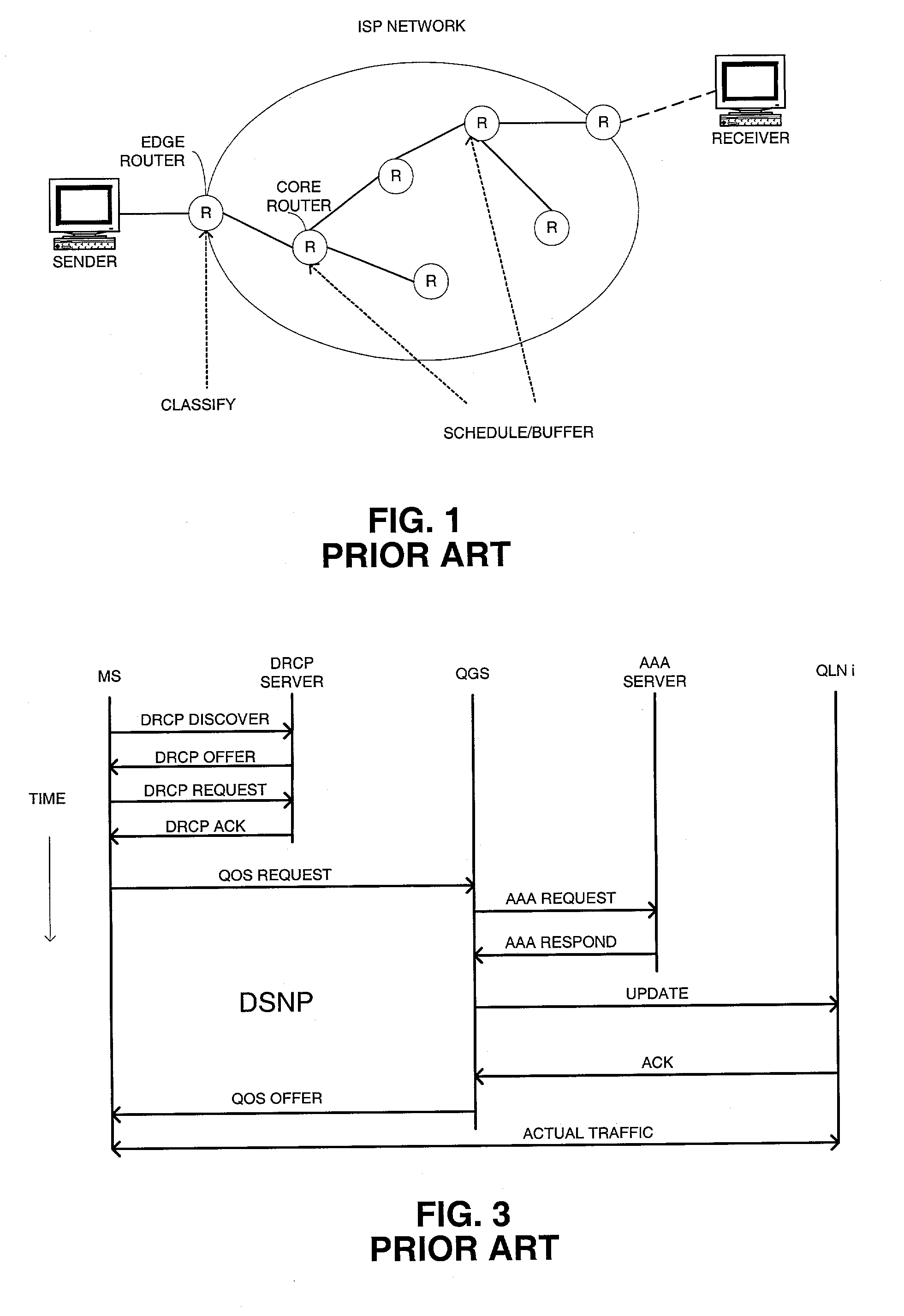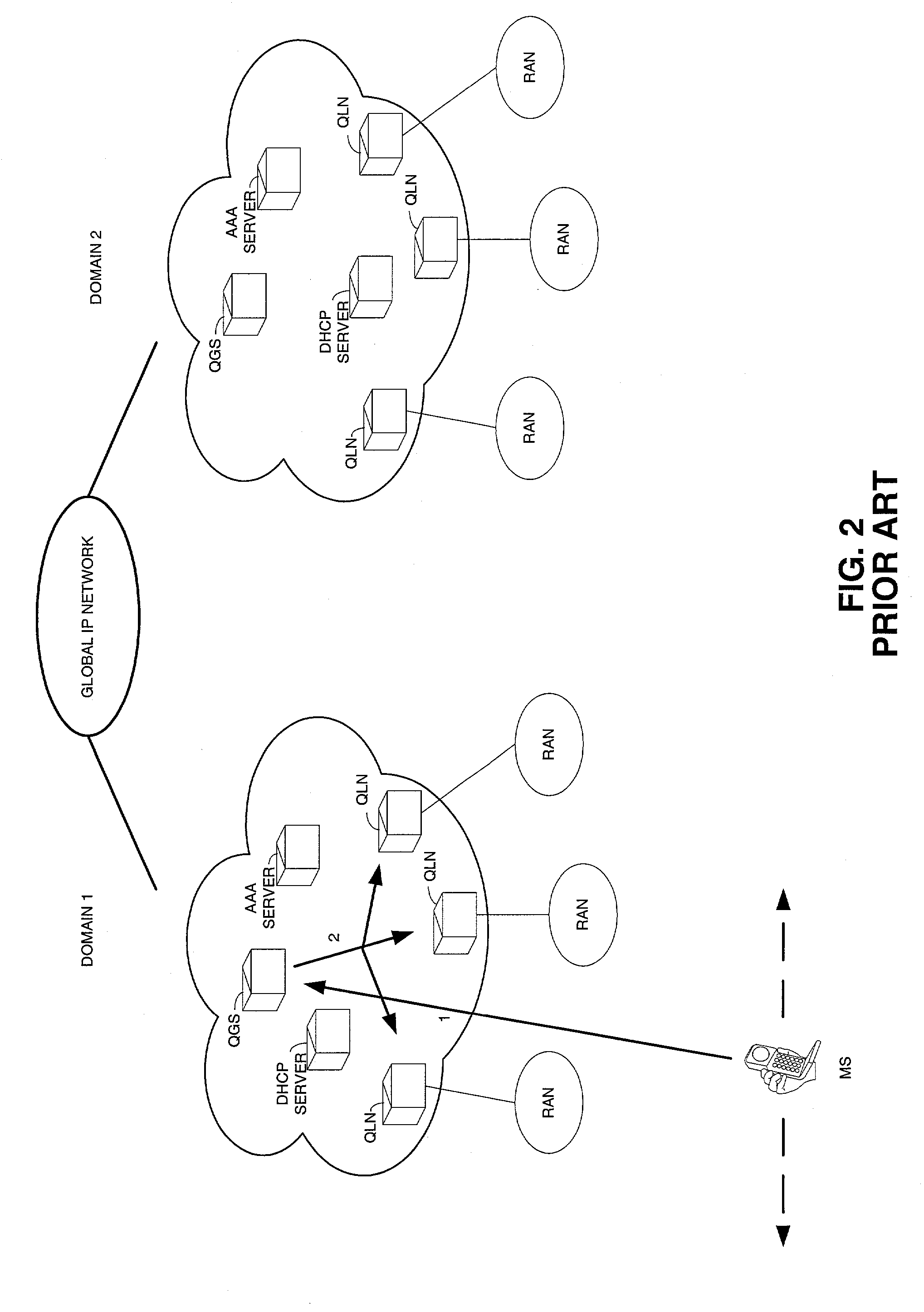Method for distributing and conditioning traffic for mobile networks based on differentiated services
- Summary
- Abstract
- Description
- Claims
- Application Information
AI Technical Summary
Problems solved by technology
Method used
Image
Examples
Embodiment Construction
[0029] FIG. 2 is an exemplary schematic block diagram of a network configured in accordance with the ITSUMO standard, with hosts accessing a Global IP Network via layer 2 radio access networks. Communication in such a system is based on the Diff-Serv protocol model. As shown in FIG. 2, the system includes at least one global server and several local nodes in each administrative domain (e.g., Domain 1 and Domain 2). Here, the server is referred to as the QoS Global Server (QGS), and local nodes are referred to as QoS local nodes (QLNs).
[0030] There are three major components of the exemplary system shown in FIG. 2. The mobile station is the device which permits users to interact and communicate via the Global IP Network. Traffic is generated / received by the mobile station and may be "dropped" or "queued" in the mobile station while awaiting the transmission or reception of IP packets.
[0031] As shown in FIG. 2, there is one logical QoS Global Server (QGS) in each administrative Domain...
PUM
 Login to View More
Login to View More Abstract
Description
Claims
Application Information
 Login to View More
Login to View More - R&D
- Intellectual Property
- Life Sciences
- Materials
- Tech Scout
- Unparalleled Data Quality
- Higher Quality Content
- 60% Fewer Hallucinations
Browse by: Latest US Patents, China's latest patents, Technical Efficacy Thesaurus, Application Domain, Technology Topic, Popular Technical Reports.
© 2025 PatSnap. All rights reserved.Legal|Privacy policy|Modern Slavery Act Transparency Statement|Sitemap|About US| Contact US: help@patsnap.com



